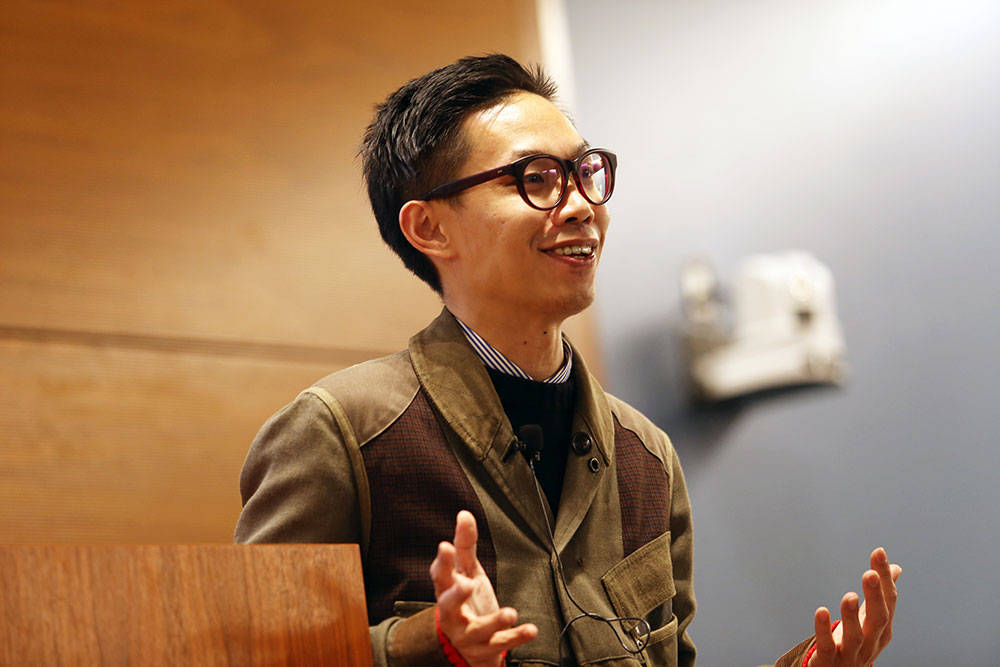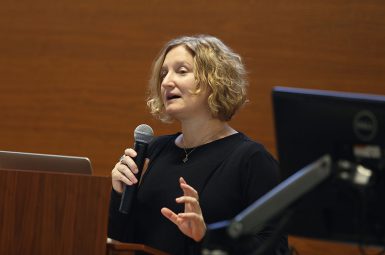China Remixed curator Leung uses video to show globalization

Students in the Franklin Hall commons last week noticed something unusual on the big screen: ghostly images, jagged lines and “snow” that looked as if the video feed was lost.
Instead, the one-and-a-half hour disruptions in the daily broadcast are part of a month-long video art exhibition in conjunction with China Remixed, a campus-wide festival of arts in contemporary Chinese culture. As part of the project, artists are visiting campus for a series of presentations and lectures.
Isaac Leung, curator of the video art project, explained the philosophy during a talk at the Global and International Studies Building last week. Leung encouraged audience members to ponder the question: What does China mean to the globe?
“It’s actually a quite interesting phenomenon that China is everywhere, which is kind of also the context of this program,” Leung said.
The “disruptive” nature of the videos is meant to get people to think about globalization in a new way, he explained. Leung lived in the United States during Bill Clinton’s presidency, and he says this is when globalization really started. China saw more American brands, like McDonald’s, introduced to its consumers, and Americans saw “Made in China” on many consumer goods.
China’s impact on the global economy has influenced how Chinese communities in and outside China — and in the rest of the world — perceive Chinese culture, he explained.
“All these globalized ideas have really infiltrated people’s everyday life,” Leung said.
In his work as an artist and with other visual art projects, Leung has curated videos that show a paradigm shift in the way the world thinks about globalization, national agenda, reappropriating knowledge, personal memoirs and social engagement.

Media School assistant professor Stephanie DeBoer teaches Chinese film courses and has assisted in the China Remixed project. She introduced the Leung and the exhibition, and explained the disruptive way the videos are being shown is quite intentional.
“This is not shown in a gallery, but in public spaces on campus on a daily basis, and I think that’s something to note,” DeBoer said.
Kristin Richards, a senior studying art and cinema, heard Leung in one of DeBoer’s classes, so she attended the talk to learn more.
“I think video art in general is a good way of making people think because it is so different from what we would expect to see on screen,” Richards said. “I think it’s a great way to start a dialogue on all these topics.”
In addition to Franklin Hall, video exhibits are showing in the Indiana Memorial Union and Wells Library as well during noon hours through March 10.

